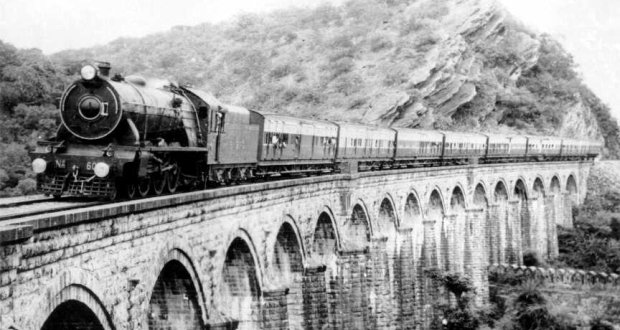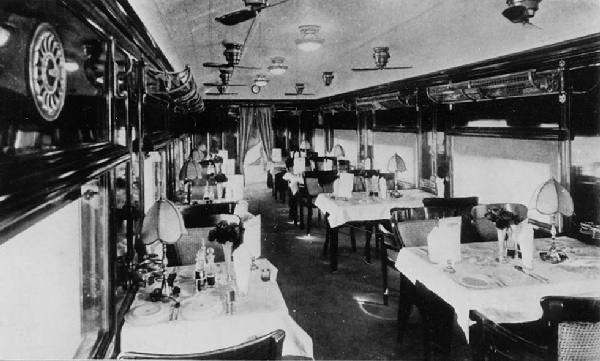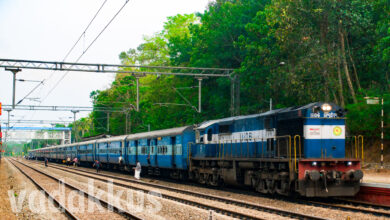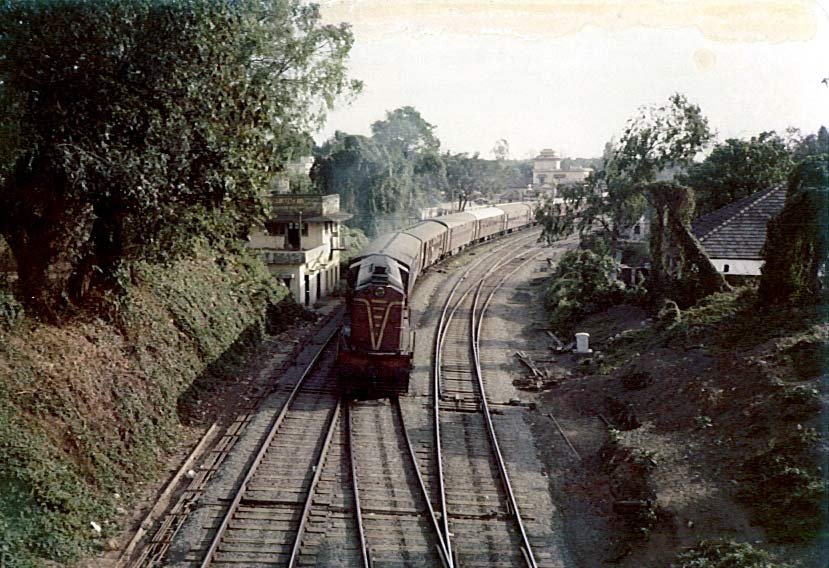How (Prestigious) Trains Ran in British India

The Railways were a way of life during the days of the British Raj and the glorious history of the Indian Railways is handed down from there. Being sure that they would probably govern India forever, British-Indian Railway companies in the early days of the Raj invested heavily in India with the latest locomotives and equipment and by laying and expanding lines everywhere. It is said that the facilities available on trains in India in those days were better than even even those in England! But investments dried up after 1930 when the independence movement gained steam and by 1947 they left behind a dilapidated, run down and accident prone network with aging locomotives, rolling stock and infrastructure with a rusting and decaying track system. An era of global railways came to an end with Indian Independence. After covering how the Indian Railways’ history came to be in the last episode, here I try to shed some light on the trains and how they ran in India pre-1947. Those trains were the epitome of luxury run for and by the white sahib who lived and traveled in style unmatched even today anywhere in the World. All management positions were reserved for Europeans as were train engine drivers and most of other qualified technical positions. It was all hunky-dory for them but unfortunately it was not so for the Indians.
“Prestigious Trains” of the Raj
The most defining feature of the British India Railways was certainly the cult status accorded to certain “important” trains according to “prestige” accorded to them by name, a colonial hangover system still followed on today’s Indian Railways. Many attributes of “prestigious” trains like them getting priority on the track, having better accommodation, speed, lesser number of stops etc are all the legacies of those prestigious trains of yore. However those days “prestige” depended not on the class of the train but the class of the people traveling on them. Prestige status was accorded to those trains the elite and high officials of the British Raj regularly traveled on. The most important of these famous trains was the Frontier Mail running Bombay – Baroda – Delhi – Lahore – Peshawar, taking travelers deep to the edges of the Empire. Having only First and Second Class this was the elite of the elite trains in India with the most exuberantly opulent comforts. It was supposedly punctual to the dot and when it arrived in Bombay the entire station would be lit up to announce its arrival. Such was the association of this train with British snobbery that the Indian Railways of today decided to do away with even its name post-independence. The successor of the Frontier Mail today runs as the Mumbai Central – New Delhi – Amritsar Golden Temple Mail, but is still among the fastest and most prestigious non-premium trains on the route. Other “prestigious” trains of the day were the Mangalore – Peshawar (later Mettupalayam – Lahore and then Madras – Delhi) Grand Trunk Express, the Punjab Mail, the Indian Imperial Mail, the Flying Mail, the Boat Mail, the Deccan Queen, the Taj Express, the Flying Ranee and all Mail trains. Most of these famous and historic trains of past India still run today and are still given lots of prestige even today.
Picture Courtesy: Trainweb.org (Click on the picture for more such photos)
Classes of Accommodation in British India Trains
Trains in British India had four classes: First, Second, Third and Fourth. First Class was defined by its incredible luxury with wonderfully appointed plush carriages (coaches) divided into individual cabins or suites whose ultra-luxurious interiors included carpeting, electric lights, fans, wood-work, all paneling, royal-size beds/berths, showers, servant quarters and all. Some even had rudimentary “Air-Conditioning” where a big block of ice bought from the platform could be lowered into a slot in the floor or roof and fans would be directed at it for cooling effect! Only the most distinguished Europeans could travel by First. Todays “elite” First Class AC would seem like a general compartment compared to these. And unlike those of today, the then first class carriages did not have corridors. Each “cabin” as it is called today was a separate room or suite with its own doors opening on either side of the carriage right onto the platform. Each carriage (coach/compartment) could consist of a number of such “rooms”. This was luxury at it’s best, a kind of opulence that is not seen probably anywhere in the world on general trains today. Yes, think Titanic, think James Bond’s (Sean Connery) train compartment in “From Russia, with Love“. These coaches were rumored to be in service until the 1980s.
Second class was almost as luxurious as the first but had only sitting arrangements with heavily padded and cushioned seats. Many might have been divided into cabins with wardrobes etc, accessible from a corridor. Some might’ve had no corridors with seats on either side. You can check any old British movie (Or Narnia, the first part) to see how these carriages looked like. It was the preferred mode of transport for the Europeans. Third class consisted of plain carriages with wooden benches meant for the lowly traveler. Most of these didn’t have lights, fans, toilets or even bars on the windows at first. Indians usually traveled in these and the coaches were filled with dirt and filth. . They were the general second compartments of today, but only far worse. Fourth class carriages were basically just empty boxcars with windows and without even benches, crammed with people to the brim in unimaginable conditions, worse than the third class and neither the other passengers or the Railways cared about them. Indians, wretched as they were seen as by the British could only afford and were allowed to travel only by third or fourth class while their overlords wallowed in luxury in First and Second class. Later, Fourth was abolished and a new class named “intermediate” or “inter” was introduced between Second and Third classes, which offered better seating for reasonably rich Indians and poorer Europeans with comforts a bit better than third class. Our General Second Class (Unreserved) compartments we see at either ends of express trains today are the direct descendants of these “Inter” coaches. Third continued as the dismal original Cattle Class until it was abolished post independence in 1955. Many trains had restaurant cars which could put to shame any 5 star restaurant of today, where you could snack on the best delicacies, Indian or European or whatever you fancied. Most trains had bars aboard and you could even get iced beer on call!
Picture Courtesy: Trains-Worldexpresses.com
Rolling Stock and Locomotives
Rolling stock was mostly wooden at first and later had more metal incorporated into them. There was no standardized uniform design as we see today and each railway company designed and made carriages the way they wanted as any woodworking shop of enough stature could build railway carriages as per order. Locomotives were entirely steam, those great imposing wheezing, hissing and chugging machines belching steam and smoke were the Boeing 787 Dreamliners or Airbus A380s of the day. People would gape at them and worship them awe-inspired as the definition of power, something they could not understand those days. The locomotives were mostly built by the Vulcan foundry and other British factories and shipped to India. I could not find a decent compilation of all locomotives used during those times. During WW 2, most of the better locomotives were shipped out of India, leaving the country with the worst of the lot by independence. There were a couple of diesel engines and 5 electric locos doing duty on the 383 km Mumbai – Pune route which was electrified way back in 1930. Another bewildering aspect was the near-total absence of shunting locomotives in India after WW2, so much so that elephants and even people were used to push wagons and carriages to shunt them! Such was the “great legacy” that the British left us. Our outdated locomotives had limited hauling power, and trains could have maximum 10 or so coaches. As they could not cut down on the number of high-class coaches, they cut down on the number of Third and Fourth class coaches, and guess who suffered?
We all know about timetables of the “prestigious” trains of British India. But there were hundreds of other trains as well, lowly passenger services and other sundry expresses connecting cities and hinterland. No one knows how they ran, if they ran at all, and how people traveled in them. It is not even known what emphasis was laid on safety, or any if at all. Coming to think of it, there are almost no records of any accidents that surely must have happened then as the technology was in its infancy. The only two recounts I could find was of an unknown train derailing and crashing somewhere on the Bhore Ghat after a siding catch failed and the Punjab Mail derailing at Bihta in Bihar. Details of both these records are conspicuously missing. When it comes to timing and punctuality, Mail trains used to run perhaps more or less on time because of their passengers and because of the mail it carried, which would have great implications if it did not reach it’s recipients on time. It is said that it was unimaginable for a Mail train to be late but it can only be imagined how the other trains were operated, the passenger trains and other long distance express trains. Trains had much lengthier halts in those days as many junctions did not have bypass lines, and the loco had to be turned around and most lines were single track where unimportant trains would be held up for Mails to pass. Also, trains needed to be filled up with water and higher class passengers had to be ferried to the restaurant cars, and if these were not available, to restaurants on the platform. Yes, waiting time for that was included in the timetable! I am sure many unimportant trains would have been running late by days altogether all the time!
However, the running rules of the Railways of those days had a profound impact on how Railways were run in independent India. The real legacy of the British-Raj era railways lies therein. We still have Railways divided on the class of reserved and unreserved. We also have operating rules directly inherited from the British and our trains run on those rules whose basics were laid down by the British. Those were the days when the Railways defined the World and as the British ruled the World with India as their largest colony, the railways of India was ground Zero for all the movers and shakers of the World. But all was not so rosy. The British might have done a good job of running the Railways pre-1930, but no one ever bothered to know how the non-British survived the railways. India and its real inhabitants were always left undocumented in the frenzy about the Romance of the British Railways by the Indian and the British elite alike. More about that in the next part.
Previous Part (02) – History of the Indian Railways: Pre-Independence
Next Part (04) – The Railways of the British Raj – Romance and Reality






my most fav train since my childhood – frontier mail
Well written, I HAVE TWO COMMENTS.the TAJ EXPRESS AND FLYING RANEE ARE NOT TRAINS OF THE RAJ BUT CAME POST INDEPENDENCE .
The four classes of travel are correct but were not called First Second THIRD AND fOURTH ,They were First, SECOND, iNTER and third.
I guess the first picture is of the Aryankavu viaduct..
Beautifully written!